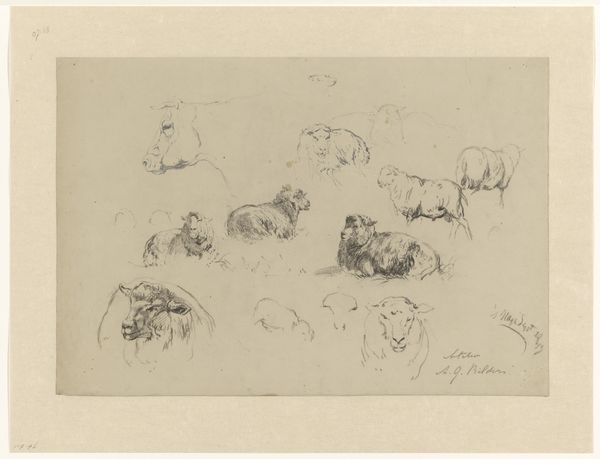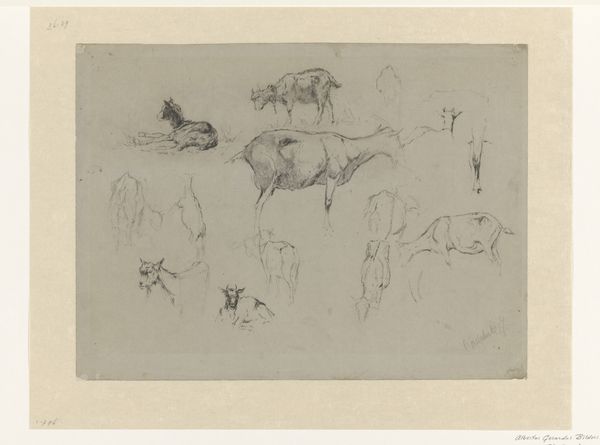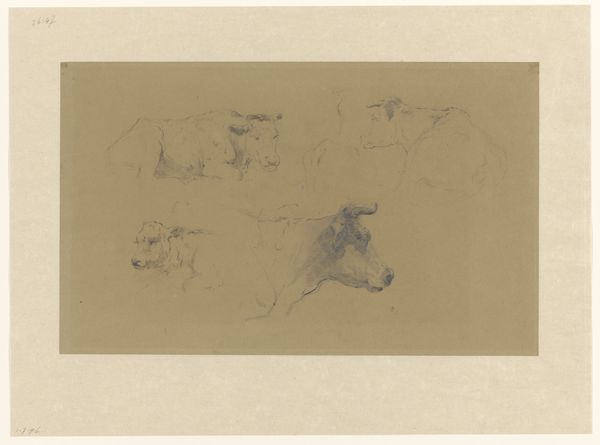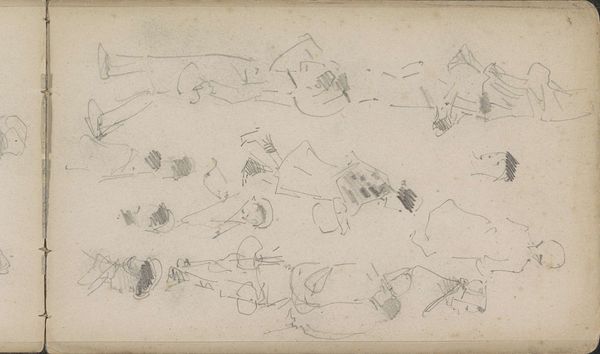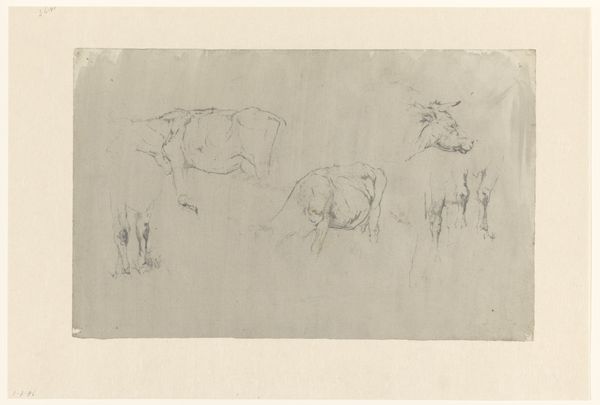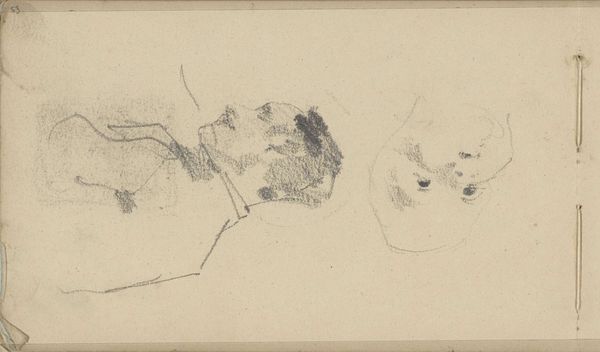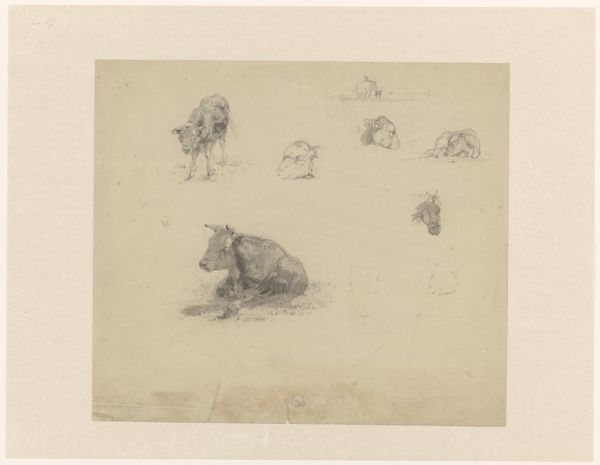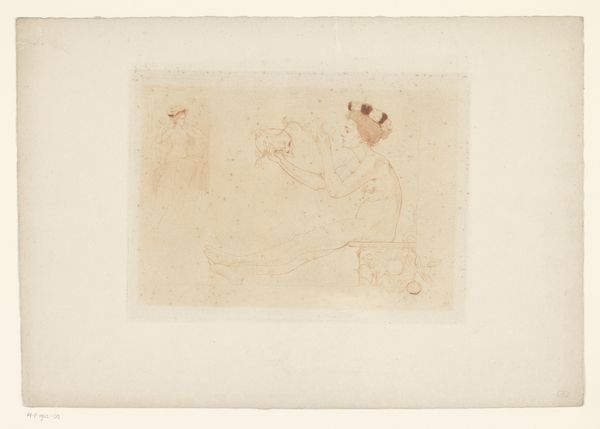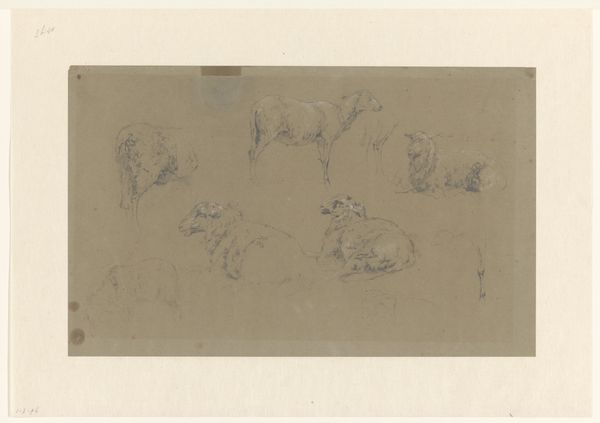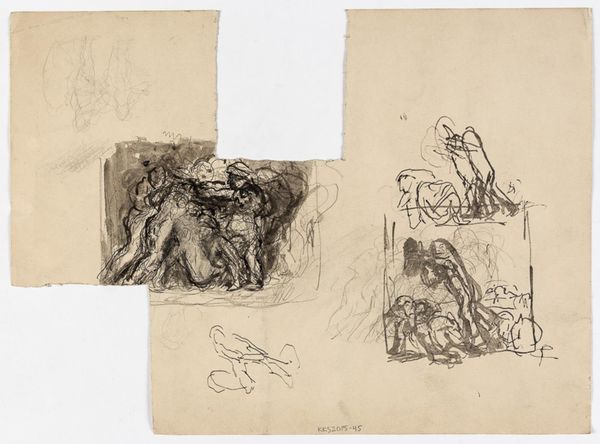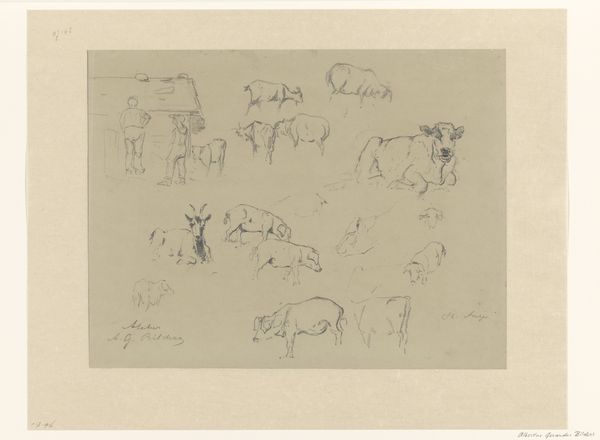
drawing, paper, pencil, graphite, pastel
#
drawing
#
pencil sketch
#
landscape
#
paper
#
pencil
#
graphite
#
sketchbook drawing
#
pencil work
#
genre-painting
#
pastel
#
realism
Dimensions: height 425 mm, width 300 mm
Copyright: Rijks Museum: Open Domain
Curator: Here at the Rijksmuseum, we have a captivating sheet of sketches by Gerard Bilders, dating back to 1857. It’s a study of cows, rendered in graphite, pencil, and perhaps even a touch of pastel on paper. Editor: My first impression is of utter peace. It’s like stumbling upon a secret pasture where time slows down. Just cows, content in their cow-ness. Curator: Precisely. Bilders, deeply involved in the Hague School movement, sought to capture the Dutch landscape and rural life with honesty. Notice the artist's attention to capturing their poses, the texture of their hides. Each cow feels uniquely individual. Editor: There’s an undeniable intimacy, even tenderness, in how he depicts them. The casual arrangement of the sketches – some are just heads, others are calves nestled in the grass – lends this a refreshing, unsentimental feel. It really shows you his raw thinking and studies behind artmaking. Curator: His focus wasn't just aesthetic; it reflects the changing Dutch landscape of the mid-19th century. Agriculture and animal husbandry were integral parts of the economy and national identity. By depicting these bovine subjects, he highlights their central role in Dutch life and culture. Editor: I see your point! It makes me consider the contemporary context - in our age of mass food production, these intimate sketches ask us to value simpler ways of living. Looking closer I am fascinated with how in a few very effective lines he portrays these beings. They remind me about innocence. It is almost melancholic. Curator: I find myself marveling at how this drawing shows us his intimate experience of the land itself—not grand or historical events, but this deep familiarity with rural environments. He invites viewers to reflect on nature’s rhythms and the simplicity of agrarian existence. Editor: I’ll take with me an image of soft serenity from this pencil work. I wonder where Bilders was while drawing all those beings. This alludes to my deeper understanding about Dutch naturalism and simple beauty of cows that graze and live in a field of harmony and peace. Curator: And perhaps it also reminds us about the important role that pastoral artwork still can perform nowadays: slowing our ever spinning minds for contemplation and understanding about life and living beings around us.
Comments
No comments
Be the first to comment and join the conversation on the ultimate creative platform.
